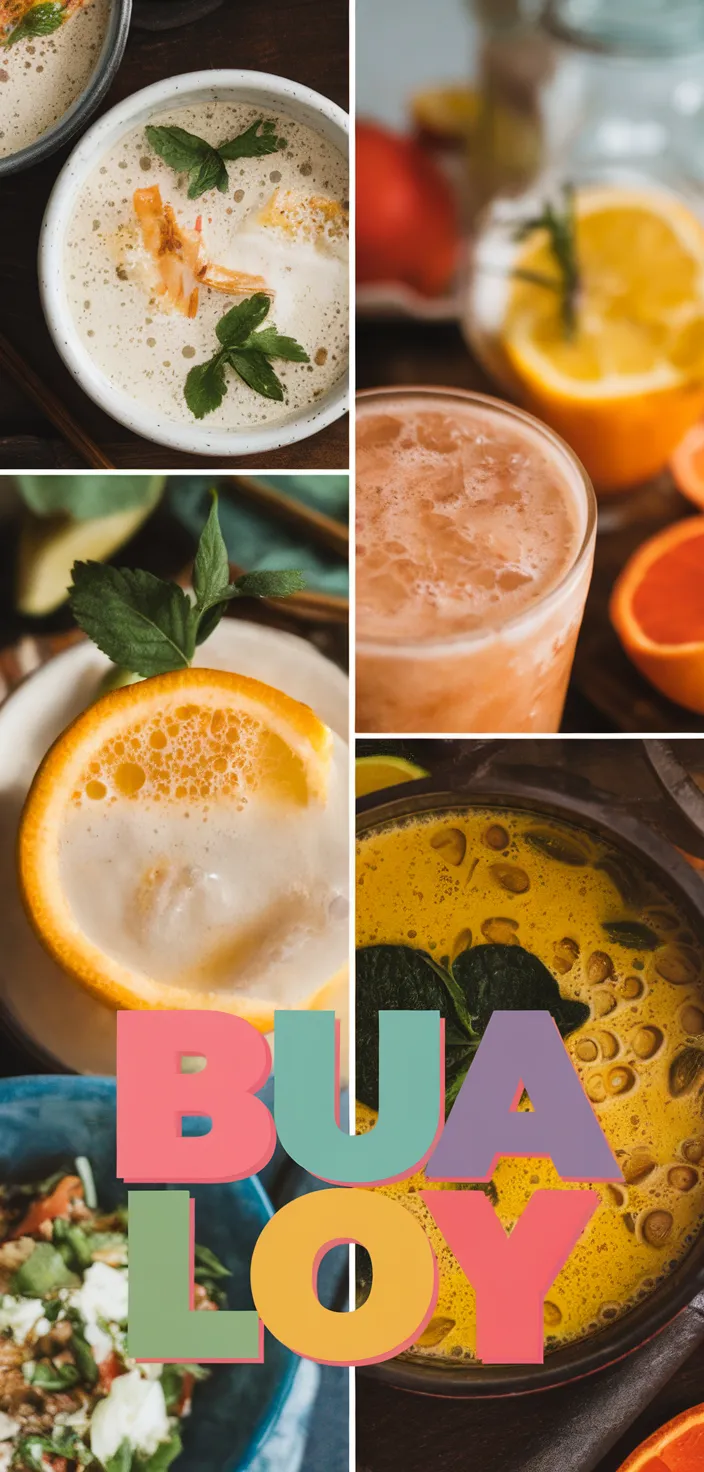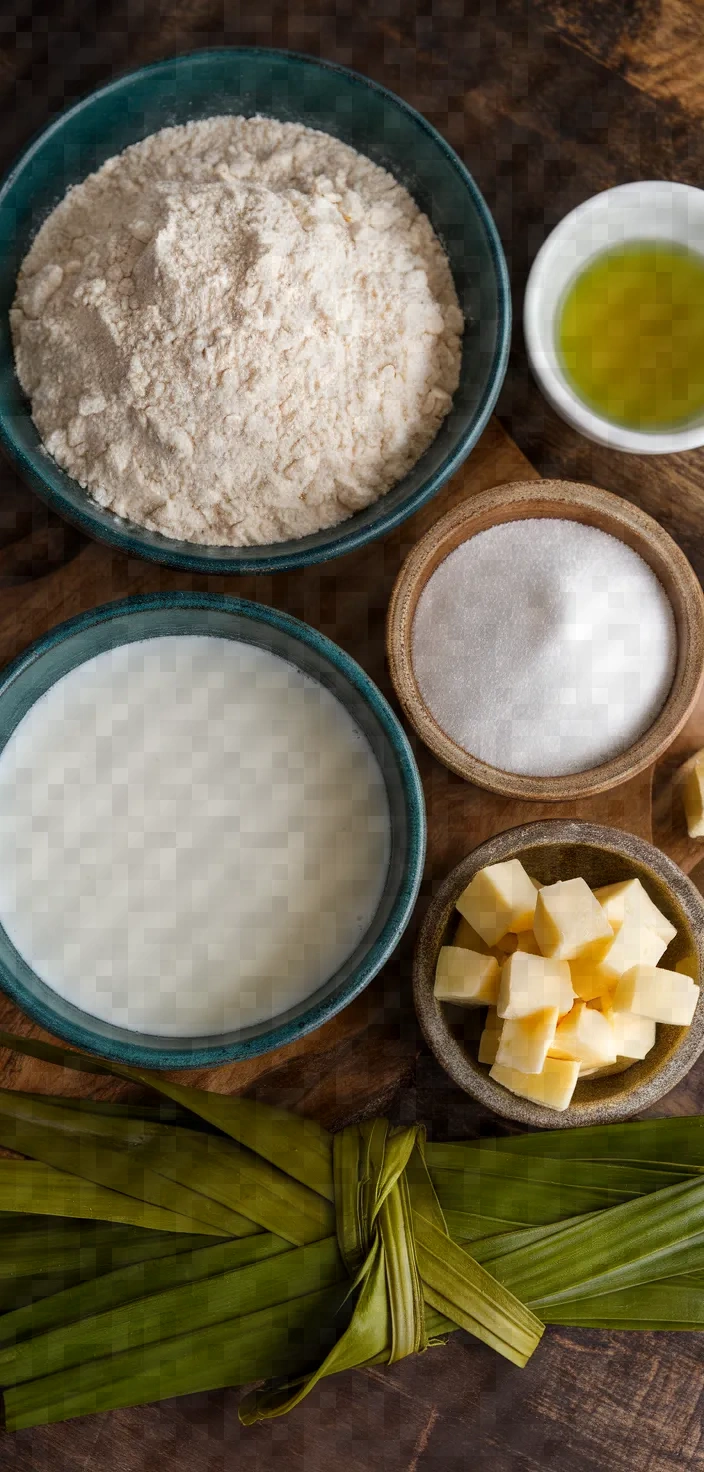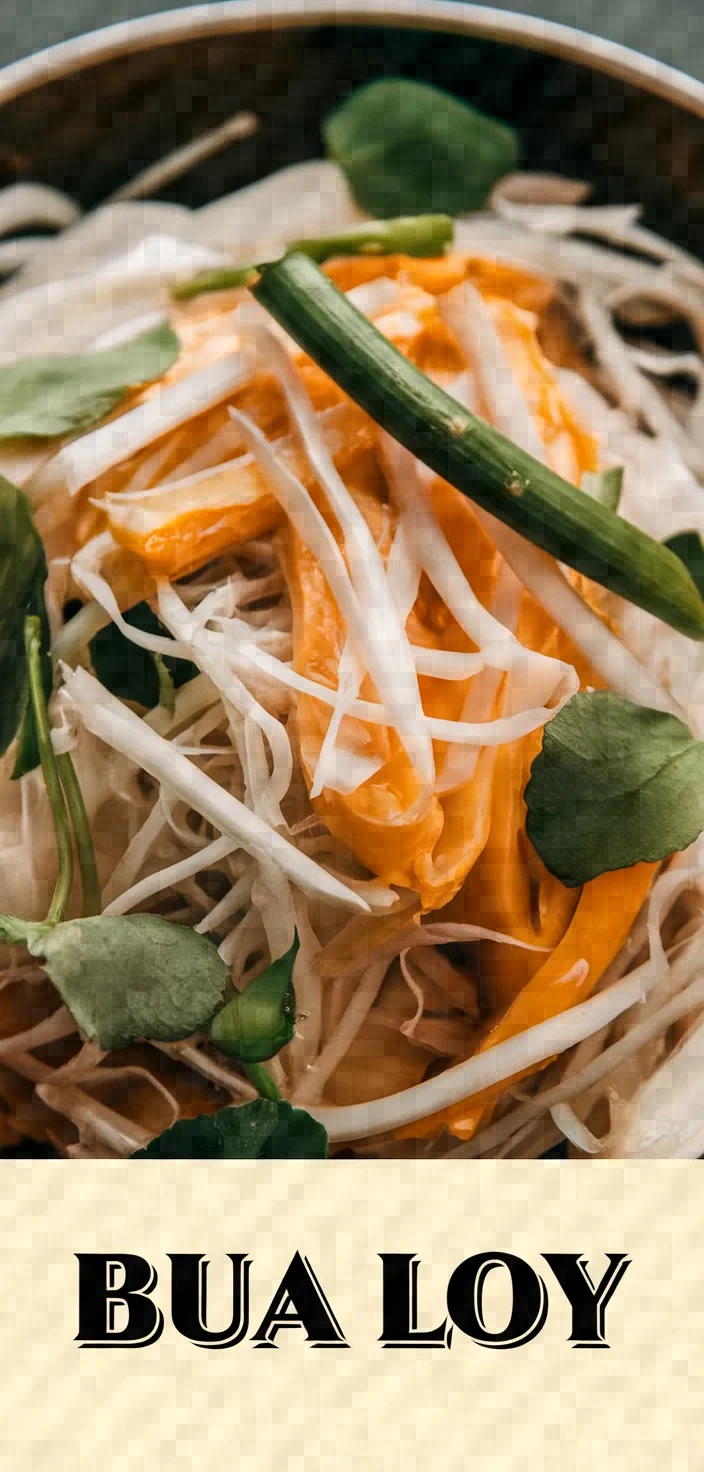I love this Bua Loy recipe because it’s the perfect blend of creamy coconut goodness and chewy rice balls, making every bite an irresistible tropical treat. Plus, the hint of pandan elevates it to a whole new level of aromatic bliss that reminds me of my favorite island getaway vibes.

Bua Loy is a Thai dessert comprising tiny dumplings made from glutinous rice flour. To make them, one blends 1 cup of glutinous rice flour with pandan juice; this gives the dumplings their stunning green color.
The flavor is taken to the next level with creamy coconut milk. And you can’t skimp on pandan leaves—these make the dish irreversibly delicious.
Ingredients

Array
Ingredient Quantities
- 1 cup glutinous rice flour
- 1/4 cup water
- 1/4 cup pandan juice (optional for green color)
- 2 cups coconut milk
- 1/2 cup sugar
- 1/4 teaspoon salt
- 2-3 pandan leaves (tied into a knot)
- 1/4 cup cooked taro (cut into small cubes, optional)
Instructions
1. In a bowl, mix together the water and software with the pan juice, if using. Make sure to blend thoroughly until smooth and without any lumps. You want a nonsticky dough that leaves no residue on your hands and bowl when handling.
2. Section off the dough into small balls, each about the size of a marble. Place the balls on a tray and set the tray aside. Dust the tray with flour, so that when the balls lie on the tray, they do not stick to it.
3. Put a pot of water on to boil. Gently add the balls of dough and boil until they rise to the top, about 2-3 minutes.
4. Once they have been cooked, use a slotted spoon to transfer the balls into a bowl of iced water. This practice ensures that they do not stick together and that they acquire a firmer texture.
5. In another pot, mix the coconut milk, sugar, salt, and pandan leaves. Heat them together over medium heat, stirring now and then, until the sugar dissolves and the mixture is warm and well combined.
6. Discard the pandan leaves from the coconut milk mixture.
7. Remove the cooked dough balls from the iced water and put them into the coconut milk mixture.
8. If you are using taro, include the cooked cubes in the pot too.
9. Gently mix together low heat and a few minutes of simmering so that the flavors meld. Then serve.
10. In small bowls, serve warm, making sure each portion contains both the dough balls and, if you are using it, the taro. Bua Loy is a delight!
Equipment Needed
1. Mixing bowl
2. Measuring cups
3. Tray
4. Flour sifter (for dusting tray)
5. Pot (for boiling water)
6. Slotted spoon
7. Bowl (for iced water)
8. Second pot (for coconut milk mixture)
9. Stirring spoon
10. Small serving bowls
FAQ
- What is Bua Loy?Bua Loy is a classic Thai dessert that features dumplings made from glutinous rice flour. They are served in sweetened coconut milk, but the dish’s true character comes from the ingredients that are often used to complement it. One of these is pandan, a leaf that when flavored and colored with, gives the dish its special touch. The flavor of pandan brings Bua Loy to a whole other level.
- Can I make Bua Loy without pandan juice?Certainly! Bua Loy can be made without the addition of pandan juice. The juice from pandan leaves provides a delightful aroma and a natural, vibrant green hue to the dish, but it is not a required ingredient.
- How do I prepare pandan juice?To make pandan water, blend chopped pandan leaves with some water and pass the mixture through a fine sieve or cheesecloth. Squeeze well to extract the juice, which is now ready for use in recipes for cakes, rice, and other dishes.
- Is there an alternative to taro in this recipe?If you lack taro, you can replace it with sweet potato or simply leave it out. The dessert will still be tasty without it.
- Can I use canned coconut milk?Yes, coconut milk from a can works just fine. Just make sure it is thoroughly mixed before using.
- What is the texture of the Bua Loy balls supposed to be like?The Bua Loy balls should be similar to mochi in softness and chewiness. They should have shape-holding but tender quality when bitten into.
- How should I serve Bua Loy?Bua Loy is usually served warm. You can ladle it into bowls and serve it up as a comforting dessert or snack.
Substitutions and Variations
If you don’t have any pandan juice on hand, use either spinach juice or matcha powder to provide the hue of green that you’re going for.
Substitute almond milk for coconut milk for a lighter alternative.
For a flavoring that’s more rich, use coconut sugar instead of sugar.
A small amount of sea salt can replace standard table salt.
Pro Tips
1. Pandan Juice Tip If you’re making your own pandan juice, blend fresh pandan leaves with a bit of water and strain through a fine sieve to extract a vibrant green juice. This adds authentic flavor and aroma to your dish.
2. Dough Consistency Achieving the right dough consistency is crucial. If the dough is too sticky, add a bit more glutinous rice flour until it doesn’t stick to your hands. If it’s too dry, carefully incorporate a few more drops of water or pandan juice.
3. Coconut Milk Mixture When heating the coconut milk mixture, avoid letting it come to a full boil. Keep it at a gentle simmer to prevent the coconut milk from curdling and ensure a smooth, creamy texture.
4. Taro Preparation If using taro, steam or boil it until tender before cubing. This helps maintain its texture in the dessert and prevents it from falling apart.
5. Serving Suggestion For a refreshing contrast, consider serving the warm Bua Loy alongside a small bowl of chilled coconut milk. This offers a delightful temperature difference that enhances the eating experience.

Bua Loy Recipe
My favorite Bua Loy Recipe
Equipment Needed:
1. Mixing bowl
2. Measuring cups
3. Tray
4. Flour sifter (for dusting tray)
5. Pot (for boiling water)
6. Slotted spoon
7. Bowl (for iced water)
8. Second pot (for coconut milk mixture)
9. Stirring spoon
10. Small serving bowls
Ingredients:
- 1 cup glutinous rice flour
- 1/4 cup water
- 1/4 cup pandan juice (optional for green color)
- 2 cups coconut milk
- 1/2 cup sugar
- 1/4 teaspoon salt
- 2-3 pandan leaves (tied into a knot)
- 1/4 cup cooked taro (cut into small cubes, optional)
Instructions:
1. In a bowl, mix together the water and software with the pan juice, if using. Make sure to blend thoroughly until smooth and without any lumps. You want a nonsticky dough that leaves no residue on your hands and bowl when handling.
2. Section off the dough into small balls, each about the size of a marble. Place the balls on a tray and set the tray aside. Dust the tray with flour, so that when the balls lie on the tray, they do not stick to it.
3. Put a pot of water on to boil. Gently add the balls of dough and boil until they rise to the top, about 2-3 minutes.
4. Once they have been cooked, use a slotted spoon to transfer the balls into a bowl of iced water. This practice ensures that they do not stick together and that they acquire a firmer texture.
5. In another pot, mix the coconut milk, sugar, salt, and pandan leaves. Heat them together over medium heat, stirring now and then, until the sugar dissolves and the mixture is warm and well combined.
6. Discard the pandan leaves from the coconut milk mixture.
7. Remove the cooked dough balls from the iced water and put them into the coconut milk mixture.
8. If you are using taro, include the cooked cubes in the pot too.
9. Gently mix together low heat and a few minutes of simmering so that the flavors meld. Then serve.
10. In small bowls, serve warm, making sure each portion contains both the dough balls and, if you are using it, the taro. Bua Loy is a delight!
